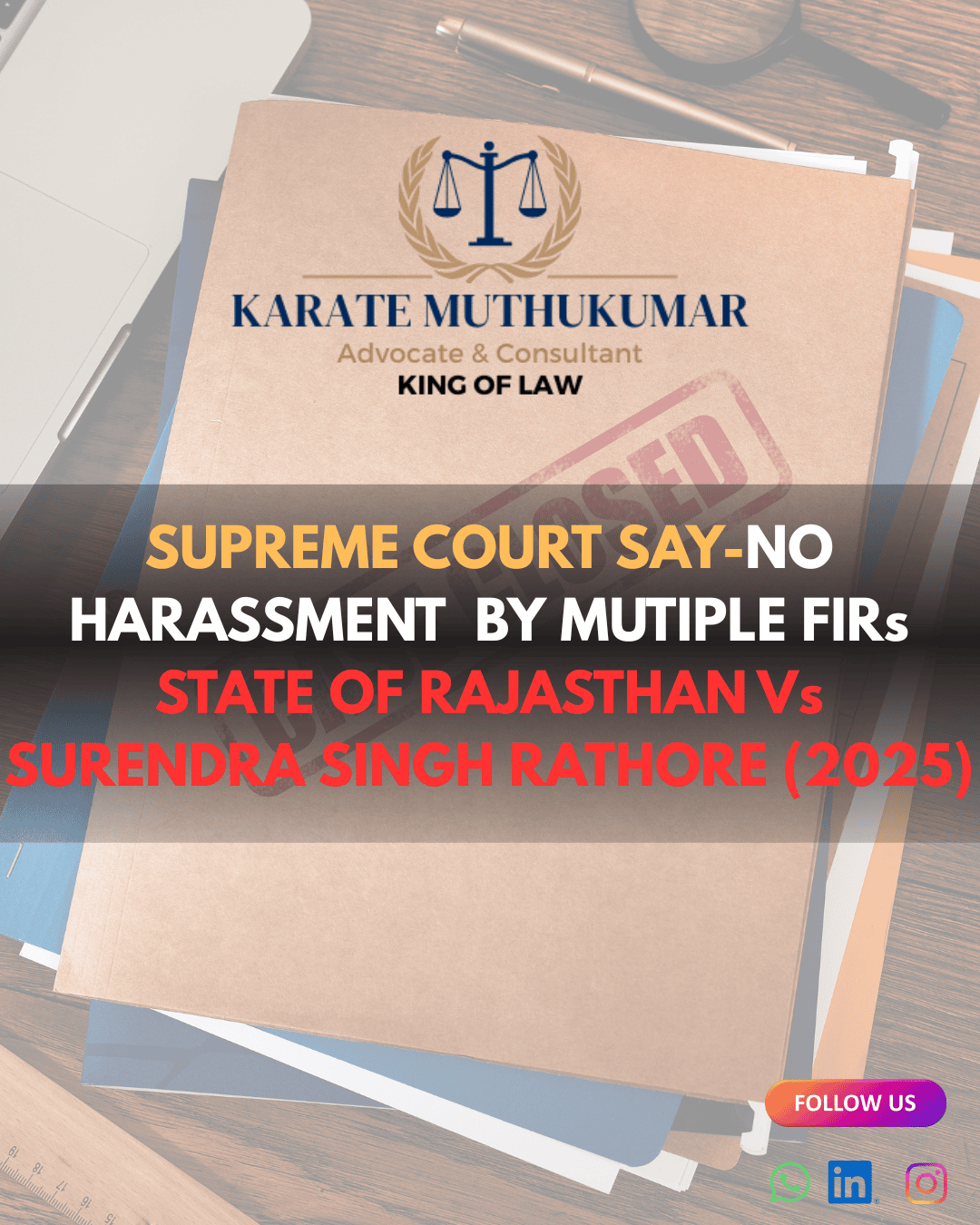📌 Background of the Case
An FIR (First Information Report) is the first step in any criminal investigation. It records the facts of an alleged crime and triggers police action.
But a common question in criminal law has always been:
In this case, Surendra Singh Rathore was booked by the Rajasthan police. Apart from the initial FIR, another FIR was filed for facts that he claimed were part of the same incident. He approached the court to quash the second FIR, saying it violated his rights and amounted to harassment.
The matter finally reached the Supreme Court.

🏛 Supreme Court’s Observations
The Supreme Court revisited its earlier judgments (like T.T. Antony v. State of Kerala and Upkar Singh v. Ved Prakash) and laid down the following principles:
Same Incident → No Second FIR
If both FIRs narrate the same story, involve the same parties, and arise from the same occurrence, then a second FIR is not permissible.
The police should continue investigation on the first FIR and file a charge sheet.
Cross-Cases Are Allowed
If in the same incident, both sides (say, two groups in a fight) file complaints against each other, then both can exist.
These are called cross-FIRs or counter-FIRs, and they are valid.
Different Facts / Fresh Offence → Second FIR Allowed
If a new incident occurs or new facts emerge which were not part of the original FIR, then a fresh FIR can be filed.
Example: A robbery FIR is filed. Later, during investigation, police discover that a different person committed a linked but separate crime (say, hiding the stolen goods). This can be a separate FIR.
Why This Distinction Matters
Multiple FIRs for the same incident can lead to harassment and double jeopardy (being punished twice for same offence).
But at the same time, barring second FIRs entirely would stop victims from reporting fresh crimes that come to light later.
🔎 The Court’s Reasoning
The principle of fair investigation requires police to act on fresh crimes.
The principle of fair trial and liberty requires that accused are not harassed with repeated FIRs for the same event.
Therefore, the Court struck a balance:
One incident → one FIR.
Separate or distinct incident → another FIR possible.
📖 Why This Case Matters in 2025
Protection for Citizens:
No person can be dragged into multiple criminal cases for the same act. This protects against abuse of process, especially in political and business rivalries where multiple FIRs are often filed.Guidance for Police:
Police now have clearer directions on when to register fresh FIRs and when to continue investigation under the first one.Tool for Advocates:
Lawyers can use this judgment to protect clients from harassment due to repeated FIRs, or to argue for the validity of a second FIR if genuinely new facts are found.
✅ Takeaway in Simple Words
One Incident → One FIR
Both Sides Fighting → Cross-FIRs Allowed
New Crime Discovered → Fresh FIR Possible
This judgment sets a clear roadmap and will prevent misuse of the criminal justice system, while still ensuring genuine complaints are not ignored.

